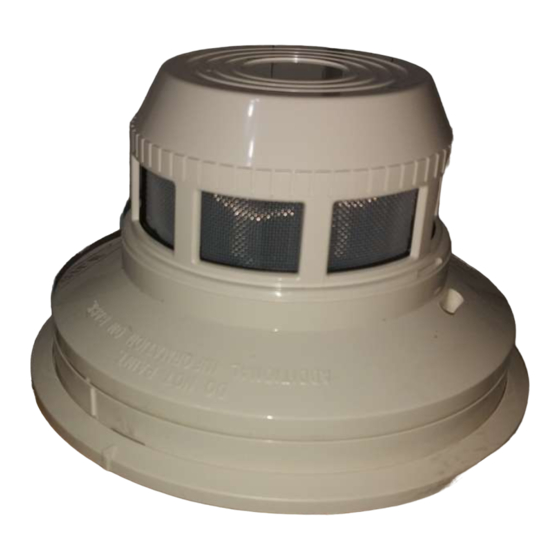ADEMCO 4192 Installatie-instructies - Pagina 3
Blader online of download pdf Installatie-instructies voor {categorie_naam} ADEMCO 4192. ADEMCO 4192 4 pagina's. Smoke detector base/transponder

Diagram
7A: INSERT
TAMPER-
Diagram
78: PUSH TAB INTO
PROOF
TAB INTO SLOT ON
BASE AFTER
INSTALLING
BOTTOM
OF DETECTOR
HEAD
DETECTOR
HEAD IN BASE
SPECIFICATIONS:
DIMENSIONS:
BASE
DIAMETER:
7.0 inches
(17.8
cm)
HEIGHT:
(DETECTOR
& BASE)
2.5 inches
( 6.3
cmj
WEIGHT:
1 .O lb. (454 gm)
OPERATING
TEMPERATURE:
32"
- 120°
F (O" - 49OC)
HUMIDITY:
10% - 85% (RH)
ELECTRICAL
RATINGS:
OPERATING
VOLTAGE
RANGE:
8 to 11VDC
NORMAL
STANDBY
CURRENT:
0.43
mA
CURRENT
DRAW
IN ALARM:
1.6 mA
MOUNTING
A. 4" square
box with plaster
ring. Minimum
depth
i -7~".
B. 4" octagon
box. Minimum
depth
1-X".
C. 3" octagon
box. Minimum
depth
1-E".
D. Direct
to ceiling
usrng sheet rock
anchors.
MISCELLANEOUS
Maximum
Compatible
Smoke
Detectors
Detectors
Wiring
Digram
Control
Panel
and
base
per
panel
number
and date
Ademco
model
BRK
models
1851 B.
29
N2014V2
4152,
4152ML
2851 BTH,
2851 B with
1 I87
4192
base
4153,
4153ML
BRK
models
37
N2759
1851 B. 2851 BTH.
9187
2851
with
4192
base
LIMITATIONS
OF SMOKE
DETECTORS
Smoke detectors
offer the earliest warning
of fire possible
at a reasonable
cost. They have saved thousands
of lives in the past
and will save more in the future. Nevertheless,
smoke detectors have limitations.
They may not provide early warning
of a fire developing
on another
level of a building. A first-floor detector,
for example,
may not
detect a second floor fire. For this reason, detectors
should be located on every level of a building.
In addition, detectors
may not
sense a fire developing
on the other side of a closed door. In areas where doors are usually closed, detectors
should be installed
on both sides of the door.
Detectors
have sensing limitations,
too. Ionization
detectors
offer a broad range of fire-sensing
capability,
but they are better at
detecting
fast, flaming fires than slow, smoldering
fires, Photoelectronic
detectors
sense smoldering
flames better than flaming
fires. Because
fires develop in different ways, and are often unpredictable
in their growth, neither type of detector is always best,
and a given detector
may not always provide warnings
of a fire. In general, detectors
cannot be expected
to provide warnings
for
fires resulting
from inadequate
fire protection
practices,
violent explosions,
escaping
gas, improper
storage of flammable
liquids
like cleaning
solvents, other safety hazards, or arson.
